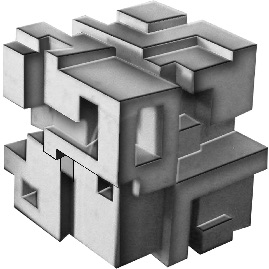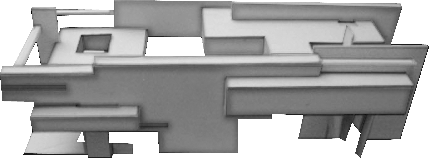EXPLORING THE CUBE
PROJECT OBJECTIVE
While maintaining a recognizable cubic volume of 3” and using proportional divisions to guide your subtractive form- making decisions, create a clear, simple, well-proportioned and compositionally balanced three dimensional construction.
The goal is to produce a spatially compelling three-dimensional construction by meaningfully engaging all six sides of the cubic form.
OVERVIEW
I wanted to base my cube on the continuous growth of humans populating the world. By systematically assigning each side with a year, I could narrow my research and analyze the earths density more specifically. Land is a natural essential resource, both for survival and humanity to prosper and so I wanted my cube to reveal that evolving need and use for land.
We were asked to diagram 4 sides and create elevations from our research. From there I realized I was starting to create much more than a 2-dimensional surface but rather I had created a grid similar to an urban layout. I took that grid into my 3-dimensional model and further developed the positive and negative spaces created by our vast growing population.
This project was significant to me in undergraduate because I realized Its not enough to simply create, we must also be responsible in the reasons why we are creating.
“Plato recognized grids and their patterns, devising a theory that the Earth's basic structure evolved from a simple geometric shapes to more complex ones. These shapes became known as platonic solids... such as the cube.









